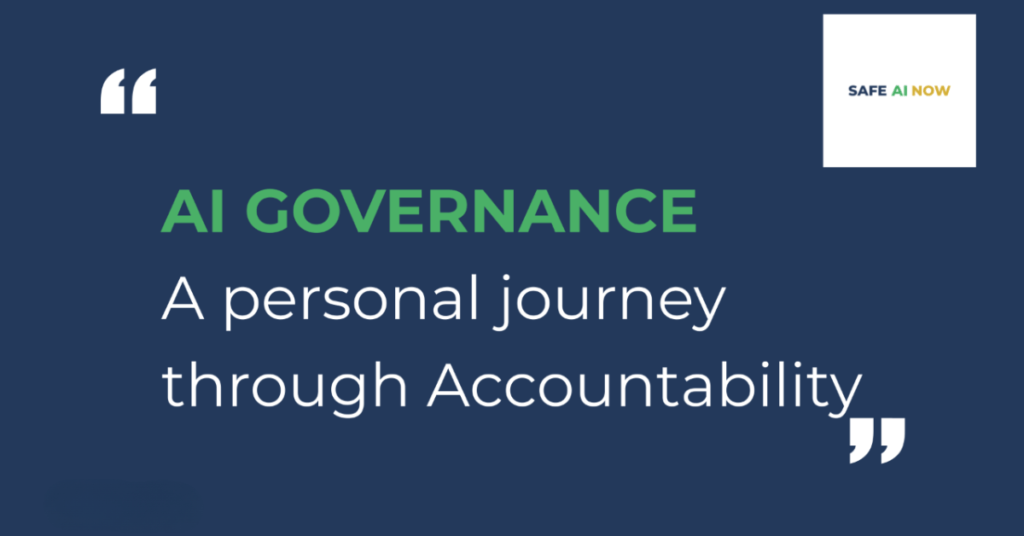Artificial intelligence (AI) is becoming a big part of our everyday lives. It’s changing industries, helping people make better decisions and making tasks easier. But as AI grows, it’s important to make sure it works in a way that is clear, fair and responsible. This article looks at what AI is, what it means for AI to be transparent and accountable and how we can make sure AI follows these principles.

What is Artificial Intelligence?
Artificial intelligence is when machines are designed to think and learn like humans. AI can do things like learn from data, make decisions and improve over time. Here are some common types of AI:
- Machine Learning : AI learns from data and gets better without being told exactly what to do.
- Natural Language Processing (NLP) : AI understands and responds to human language.
- Computer Vision : AI understands and analyzes visual information, like images and videos.
- Robotics : AI powers machines that can do tasks humans normally do.
From virtual assistants like Alexa to tools that help doctors diagnose diseases, AI is changing how we live. But with this power come questions about how to manage AI responsibly.
Means of Transparency and Accountability
Transparency and accountability are key to making sure AI is used responsibly.
- Transparency : AI systems should be clear about how they work and how they make decisions. People should be able to understand what the AI is doing and why.
- Accountability : The people or organizations using AI should take responsibility for its actions. If AI causes harm, there should be ways to fix the problem and hold someone accountable.
Without these principles, AI could end up making unfair decisions, reinforcing biases or losing public trust. Transparency and accountability are essential for ensuring AI is ethical and beneficial.
How Can We Make Sure AI is Transparent and Accountable?
Here are some ways to ensure AI is used responsibly :
- Set Ethical Guidelines : Governments and organizations should create clear rules for how AI should be built and used. These rules should focus on fairness, avoiding bias and being inclusive.
- Create Explainable AI : AI should be designed in a way that makes its decisions easy to understand. This helps people trust the technology and keeps it under control.
- Introduce Strong Regulations : Laws and policies should require AI to be transparent and accountable. This might include regular audits and penalties for misuse.
- Educate and Involve the Public : People should learn about AI and its impact so they can be part of the conversation. Public input can make AI systems more fair and balanced.
- Hold Organizations Responsible : Companies using AI should make it clear who is responsible for its outcomes. They should also keep records of how AI systems work and provide ways to address any problems.
- Work Together : Governments, businesses, researchers and communities should work as a team to create rules and solutions for AI. This teamwork can help address the challenges AI brings.
As AI continues to advance, it will have a bigger impact on our world. Making sure AI is transparent and accountable is crucial for building trust and preventing harm. By setting ethical guidelines, using explainable AI, creating strong laws and involving the public, we can ensure AI works for the benefit of everyone.
Frequently Asked Questions(FAQs)
What is artificial intelligence, and how does it work?
Artificial intelligence (AI) refers to machines designed to think and learn like humans. AI systems can learn from data, make decisions and improve over time. Common types of AI include machine learning (learning from data), natural language processing (understanding and responding to human language), computer vision (analyzing visual information) and robotics (machines performing human-like tasks). AI is used in various areas, from virtual assistants to medical diagnostics.
What does it mean for AI to be transparent and accountable?
Transparency: AI systems should clearly show how they work and why they make certain decisions. This makes it easier for people to understand and trust them.
Accountability: Those using or creating AI must take responsibility for its outcomes. If AI causes harm, mechanisms should exist to fix the issues and hold someone responsible.How can we ensure AI systems are both transparent and accountable?
To ensure transparency and accountability, we can:
Set ethical guidelines for fairness and inclusivity.
Create explainable AI systems that are easy to understand.
Introduce regulations to enforce responsible AI use.
Educate the public about AI’s impact and involve them in decisions.
Hold organizations accountable for AI’s results and provide ways to address problems.
Foster collaboration between governments, businesses, researchers and communities.









